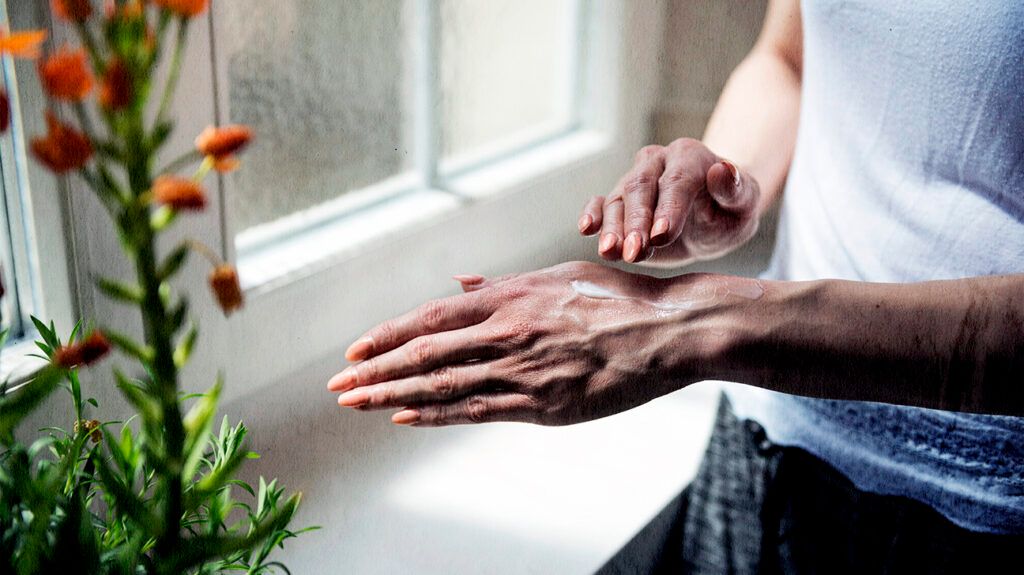Itchy skin, or pruritus, can be a symptom of liver disease. However, not everyone with liver disease experiences itching, and the specific causes of this itching are unknown.
Treatment for itching skin can include home remedies such as remembering to moisturize, taking cold baths, and wearing loose-fitting clothing.

Scientists
Bile salts
The authors of a 2022 review article suggest that liver disease can increase bile salts, which then gather under the skin, resulting in pruritus. The body
However, itching does not affect everyone with liver disease and high levels of bile salt, and scientists have not confirmed a link between the severity of pruritus and bile salt concentration.
Other research suggests that unusual levels of bilirubin stimulate peripheral itch sensory neurons. Bilirubin is a pigment of bile. People with liver disease often have high levels of bilirubin.
Other naturally occurring chemicals
According to some research, other substances that occur naturally in the body may trigger pruritus.
They include:
- histamine
- opioids
- parathyroid hormone (PTH)
- female sex hormones
- calcium
- phosphorus
Histamine levels tend to be higher in people with cholestatic pruritus, although itching does not appear to be worse in individuals with higher histamine levels.
Sensitive skin cells
In 2021, some researchers found evidence that itching with PBC might involve a nerve reaction in keratinocytes, cells in the skin’s outer layer.
People with PBC have high levels of a lipid (fat) known as lysophosphatidylcholine (LPC) circulating in their blood. When the scientists injected the skin of mice with this substance, they noted an increase in itching.
They concluded that as LPC reaches the skin through circulation, it may trigger a reaction that leads to itching.
The liver is the body’s largest solid organ. It breaks down fats, detoxifies the body, produces cholesterol and proteins, and stores vitamins.
The
Some types of liver disease include:
Itching is also more common with autoimmune liver diseases, such as PSC and PBC, and overall with intrahepatic liver diseases, which are conditions affecting structures inside the liver.
In contrast, extrahepatic liver diseases affect the liver but occur outside the organ. Some, such as PSC, can involve itching.
Pruritus is less common with alcohol-induced liver diseases and nonalcoholic fatty liver disease.
Many other causes of itchy skin do not relate to the liver.
These include:
- atopic eczema
- psoriasis
- dry skin
- heat rash
- allergies
- hives
- fungal infections, such as thrush, ringworm, and athlete’s foot
- parasitic infections, for instance, scabies and lice
- hormonal changes, for example, during pregnancy, and around menopause
- other health conditions, such as thyroid or kidney problems
Scientists do not know why itching occurs with liver disease. They believe some chemicals in the body may play a role, but there is no apparent link between the levels of these chemicals and the severity of itching.
As far as doctors know, itching does not indicate that liver disease is worsening, at least for some liver conditions.
Theories to explain why the itching intensity varies focus on the nature of the nerve pathways that carry the feeling or perception of itching.
Researchers have investigated various possible treatments for itching caused by liver disease. However, there is no certain way to treat it, as doctors do not yet know why it occurs.
Prescription drugs that may help manage symptoms include:
- bile acid sequestrants, such as cholestyramine (Prevalite)
- bile acids that help the body remove other bile acids, for instance, ursodeoxycholic acid
- rifampicin (Rifadin), an antibiotic
- opioid inhibitors, such as naloxone (Narcan) and naltrexone (Vivitrol)
- a serotonin receptor antagonist called sertraline (Zoloft)
However, some of these treatments can have adverse effects.
Home remedies
Here are some other tips for reducing symptoms:
- applying skin moisturizers
- avoiding irritants, such as perfumed cosmetics
- taking cool baths
- applying a cold, wet cloth to affected areas
- avoiding hot environments
- wearing loose-fitting clothing
- avoiding scratching where possible
- wearing gloves when sleeping to prevent scratching
Itchy skin is typically harmless, but it can sometimes indicate liver disease.
Often, liver disease does not have any symptoms in the early stages. However, a person should speak with a doctor if they experience:
- yellowing of the whites of the eyes, a sign of jaundice
- fatigue and weakness
- a loss of appetite, which may lead to weight loss
- a loss of libido or sex drive
- nausea or vomiting
A person may also wish to seek medical advice if itching:
- is severe or persistent
- affects the whole body
- leads to excessive scratching, resulting in secondary skin lesions or infection
- occurs on the soles of the feet and palms of the hands
- disturbs their sleep
- affects their quality of life
People with an existing diagnosis of liver disease who experience itching may wish to seek medical advice. However, it does not necessarily mean that liver disease is worsening.
Itching is not unusual during pregnancy. It can result from hormonal changes or as the skin stretches. But, it can also result from a liver condition called intrahepatic cholestasis of pregnancy (ICP).
With ICP, bile acids do not flow properly, and they build up in the body, causing itching.
Symptoms of ICP include:
- itching, especially on the palms of the hands and soles of the feet
- dark urine
- jaundice
- pale stools
ICP typically disappears after delivery.
During pregnancy, the following may help manage itching:
- wearing loose-fitting clothes
- wearing cotton clothes
- taking cool baths
- avoiding using perfumes
- moisturizing
- avoiding spicy food, caffeine, and alcohol
Where does itching occur with liver disease?
It may occur anywhere in the body but notably in the palms of the hands and soles of the feet.
What kind of liver disease causes itching?
Itching can occur with autoimmune liver diseases, such as primary biliary cirrhosis, primary sclerosing cholangitis, and obstructive biliary disease. It also occurs with cancer of the head of the pancreas, hepatitis, and drug-induced liver disease. However, it is less common with alcohol-induced liver disease and nonalcoholic fatty liver disease.
What are the signs that liver disease is getting worse?
Itching is not necessarily a sign of liver disease getting worse, but it may occur. As damage progresses, a person may
There are many causes of pruritus, including some types of liver disease.
Experts do not know precisely why itching occurs with liver disease, although several theories exist. It is not a sign that liver disease is getting worse.
If a person has itching lasting more than 6 weeks, they should speak with a doctor.


